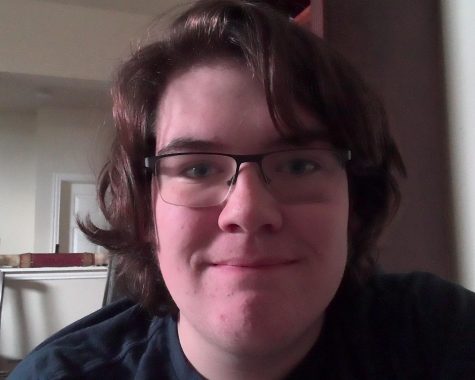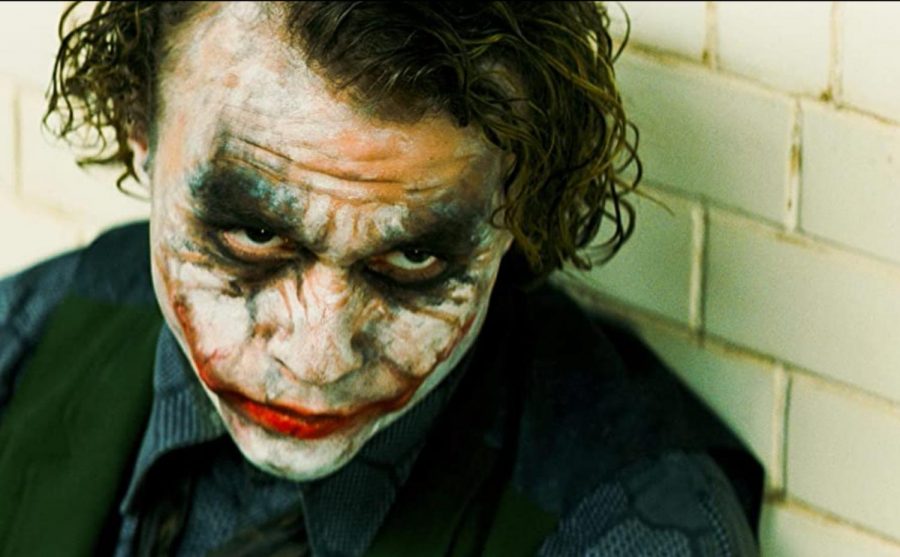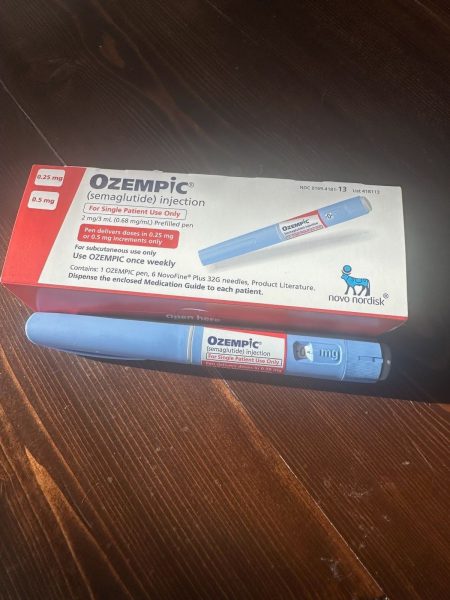Why The Dark Knight is Important
Batman is arguably the most recognizable superhero of all time, aside from maybe Spider-Man and Superman. The Caped Crusader has been patrolling the streets of Gotham City for more than 80 years.
Whether it be through the incalculable pages of the vast series of comic books by DC Comics the consoles of fans in the “Batman: Arkham” games from Rocksteady, or the screens of movie theaters and TVs everywhere, Batman has always had a strong presence in all forms of media, more specifically on the screen.
Yet, of all the on-screen interpretations of Batman, there is one that stands out most: “The Dark Knight.”
“The Dark Knight,” released in 2008 and directed and written by Christopher Nolan and starring Christian Bale, Heath Ledger and Aaron Earkhart, is the sequel to 2005’s “Batman Begins” and the prequel to 2012’s “The Dark Knight Rises.” It portrayed more realistic interpretations of Batman, The Joker, and Two-Face, with a story containing much darker tones and themes compared to previous iterations of DC’s iconic characters. A new redefinition of Batman that has more influence than arguably any other piece of Batman media. What makes this modern Batman so beloved? Here’s why “The Dark Knight” is so Important.
Spoilers will follow
The reason why “The Dark Knight” is viewed as a definitive version of Batman is because it excels in two major aspects: the characters and the message.
To give a more recent, DC-related example for comparison, this is also what makes 2019’s “Joker” by Todd Phillips and starring Joaquin Phoenix as amazing as it is. Arthur Fleck, the relatable yet disturbing Joker, doesn’t become Joker because he is mentally ill. He becomes Joker because of how the society around him has ignored and actively stomped on him with total disregard of his difficulties, photographing current society’s similar struggles with Arthur being the mirror to reflect all who have been disenfranchised. “The Dark Knight” has a similar formula but not with one but rather three enthralling individuals.
Batman, also known as Bruce Wayne, is one of them. Batman is the “unstoppable force” of order, and is meant to represent justice in its pure, yet flawed form. Junior Dhakshin Parimalakumar, a superfan of the films, agrees.
“He takes everything in his own hands,” Parimalakumar said. “He doesn’t kill anybody. He stops crime, but he doesn’t want to make anyone suffer.”
Batman refuses to kill, even when people deserve it. He goes out of his way to stop the festering of crime, even if it’s pointless, and only exists for the purpose of destroying something that can never truly be destroyed: chaos. Batman is also human, and only one man at that. He can still feel pain — emotional, physical and psychological — and his emotions can get in the way of his beliefs as Batman, resulting in him making the hard decisions that impact both parts of his life in devastating ways.
He is an “unstoppable force,” but an “unstoppable force” needs an “immovable object.”
Heath Ledger’s Joker is that “immovable object.” The antithesis to Batman’s thesis is one of the absolute best villains in existence for how opposite he is to Batman, yet also so similar, almost being the perfect foil. Another side of the same coin.
“You should always include him because he’s Batman’s arch-nemesis. He’s there to be the complete opposite of Batman.” Parimalakumar said. “He symbolizes the definition of evil.”
The Joker has no one, sole origin, but several that are told in stories about how he got his horrifying scars, all being non-definitive and used to intimidate his victims before ruthlessly doing the same thing to them. It’s done not just as a psychological technique, but also a symbolic one, demonstrating The Joker is not one man, but numerous people who could have been the exact same as him.
He has no remorse, guilt, or even a basic plan in place for the horrible actions he takes throughout the film, which are less like the cartoonish death traps of the past and are more like post-9/11 terrorism. He isn’t robbing a bank or handing out poison cotton candy, he’s blowing up a hospital unless the people of Gotham kill an innocent man. The Joker’s goal isn’t money or power, it’s chaos. After all, “some men just want to watch the world burn.” He represents the sadistic and enjoyable nature of chaos, not just because he enjoys the mayhem but because to him, chaos is fair, and that leads to the last major character.
Harvey Dent is the district attorney for Gotham City and is effectively the middle ground for Batman and Joker, while also effectively being the representation of Gotham’s soul. Dent starts out as the symbol of hope, even more so than Batman, and is willing to do anything if it means protecting the people of Gotham. Unfortunately, that came at too much a cost. When he finds out that Rachel, his fiance and a former love interest of Bruce Wayne, is being targeted by Joker, he starts to crack under the pressure and soon completely shatters when Rachel is killed and he’s injured in the same incident. That’s the
“You could say there’s two villains, but the thing about Two-Face is that he’s Harvey Dent for most of the movie” Parimalakumar said.
Dent, now with half his face scarred, descends even further after he escapes the hospital he’s in and kills numerous corrupt cops and even threatens to kill the family of Commissioner Gordon because he blames them for Rachel’s death. He, now Two-Face, leaves the lives of Gordon’s family up to chance with a literal coin flip, one side clean, the other scarred. Batman saves them shortly after capturing Joker after the boat incident, but kills Two-Face as a result. In order to protect the soul of Gotham, Batman takes the blame for the murders of the cops by Dent and goes into hiding so that Dent can remain as a beacon of hope, rather than the thing Joker wanted Gotham to become.
And that’s exactly where the other point comes in: the message. Harvey Dent infamously said in an early scene that “you either die a hero, or you live long enough to see yourself become the villain.” The phrase, while iconic by itself, has important context to the idea of “The Dark Knight,” which is that all men are created equal, and as a result all men are capable of acts of righteousness as well as horrible atrocities.
Dent goes from the symbol of hope for Gotham City into the exact thing Joker became, a scarred, violent, chaos driven man. The people of Gotham tried to kill an innocent Wayne Industries employee to stop a hospital explosion. Even Batman himself broke his one rule of not killing people to save Commissioner Gordon’s family. Yet despite all this, Gotham also had criminals who chose not to blow up a boat filled with hundreds of people. It had hundreds of people choose to keep criminals alive despite their atrocities. Most importantly, it has Batman selflessly kill the identity of Batman at the end of the movie to save Gotham’s soul, greatly illustrating who he really is.
“The Dark Knight really got everything,” Parimalakumar said. “Everything that happened was kinda like realistic fiction, aside from a few villains, and it all goes to show just how Batman would act in the real world.”
The Dark Knight” is brilliant not because it’s dark or realistic by any means, it’s because it understands the dynamics between order and chaos, justice and injustice, and the human condition well enough to create one of the most compelling films of all time. It’s not necessarily about how Batman saves the day, but rather how people can save or doom themselves. In the end, no one is ultimately fully righteous, but no one is necessarily evil either.

Colin Campbell is the senior managing editor for the Eagle Angle. His interests are current events, political discussions, criticizing and making fun of...





